Comprehensive Guide to Cooking Chickpeas
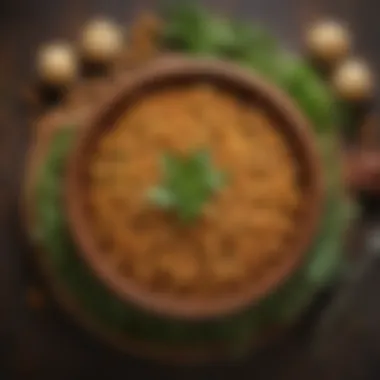
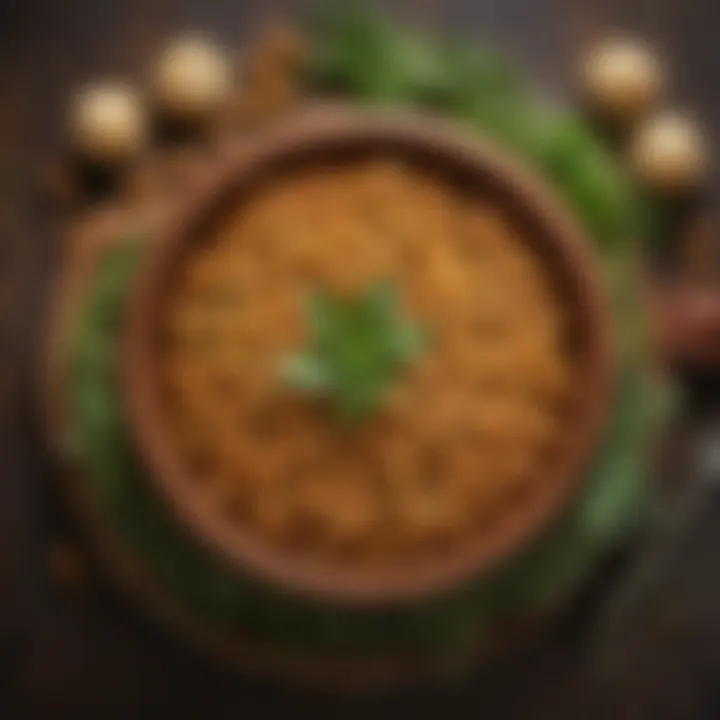
Intro
Chickpeas, one of the oldest cultivated legumes, have stood the test of time in diverse cuisines around the globe. Their versatility is notable; they can be blended into hummus, tossed in salads, or cooked in stews. Understanding how to prepare and cook chickpeas not only enhances flavor but also maximizes their health benefits. This guide will delve into the various aspects of cooking chickpeas, offering insight for everyone, regardless of cooking skill level.
Whether you are a culinary novice or a seasoned cook, this comprehensive overview will provide you with practical knowledge on selecting the best chickpeas, the best methods for cooking them, and innovative ways to incorporate them into your cooking routine.
Preamble to Chickpeas
Chickpeas are an invaluable ingredient in the culinary world, appreciated for their versatility and nutritional value. Understanding chickpeas is essential as this pulse not only enhances the taste of various dishes but also provides significant health benefits. This section introduces the reader to the importance of chickpeas, covering their nutritional profile and culinary history. By knowing more about chickpeas, cooks can make informed decisions about incorporating this ingredient into their meals, ensuring both flavor and wellness.
Nutritional Profile
Chickpeas are a powerhouse of nutrients. They are rich in protein, making them an excellent option for vegetarians and vegans seeking plant-based protein sources. A typical serving of chickpeas offers around 15 grams of protein, which aids in muscle repair and overall bodily function.
In addition to protein, chickpeas are high in dietary fiber. This helps in promoting a healthy digestive system and can assist in weight management. One cup of cooked chickpeas contains about 12 grams of dietary fiber. It aids in lowering cholesterol and stabilizing blood sugar levels, making chickpeas a smart choice for those managing diabetes.
Moreover, chickpeas are loaded with essential vitamins and minerals. They contain significant amounts of folate, manganese, iron, and magnesium. Folate is vital for DNA synthesis and repair. Manganese plays an important role in bone health and metabolism. Iron helps in transporting oxygen in the blood, and magnesium supports energy production. The nutrient density of chickpeas makes them an appealing ingredient for health-conscious individuals.
Culinary History
Chickpeas have a rich culinary history that spans thousands of years. They are believed to have originated in the Middle East, where their cultivation dates back over 7,000 years. Historical evidence suggests that chickpeas were one of the first cultivated legumes, appearing in ancient dietary practices.
In ancient times, chickpeas were a staple food in many Mediterranean and Middle Eastern cultures. They played a significant role in diets due to their ability to sustain energy and provide nourishment. The use of chickpeas spread over centuries, and today, they are a prominent ingredient in various cuisines worldwide.
One of the most well-known dishes featuring chickpeas is hummus, a creamy spread made from blended chickpeas, tahini, lemon juice, and garlic. Its popularity has proliferated in recent years, moving beyond Middle Eastern cuisine to become a favorite snack in many countries.
Also, chickpeas have found their way into notable dishes such as falafel and various curries, showcasing their adaptability in both vegan and non-vegan recipes. This historical significance highlights not only the longevity of chickpeas as a food source but also their cultural importance across diverse culinary traditions.
"The culinary history of chickpeas illustrates their journey from ancient times to modern kitchens, where they continue to impress with their flavor and nutrition."
Types of Chickpeas
Chickpeas are a cornerstone in various culinary traditions across the world. Understanding the different types helps in selecting the right variety for specific dishes. This knowledge allows for better flavor profiles, textures, and nutritional benefits. Chickpeas not only add substance to meals but also enhance their health benefits, making them a worthwhile addition to any diet.
Desi Chickpeas
Desi chickpeas are smaller and darker than their counterparts. They typically have a rougher coat and come in varieties that range from light brown to dark black. This type is often found in South Asian and Middle Eastern cuisines. The taste is nuttier, and the texture is more coarse when cooked. Desi chickpeas contain more fiber and protein compared to other types, making them a nutritious choice. They are often used in traditional dishes like dal and chana masala.
Kabuli Chickpeas
Kabuli chickpeas are the larger, lighter-colored beans commonly available in western markets. Their smooth texture and mild flavor make them highly versatile, suitable for a wide range of recipes. Kabuli chickpeas are most recognized in dishes like hummus and salads. This variety is often preferred for its softer texture after cooking. Kabuli chickpeas contain slightly less fiber but are still rich in essential nutrients. Their culinary applications include purees, dips, and a variety of savory dishes, showcasing their adaptability.
Other Varieties
Beyond Desi and Kabuli, there are other notable chickpea varieties worth mentioning. These include:
- Black Chickpeas: Known as kala chana, they are particularly popular in Indian cuisine. They have a unique flavor and denser texture.
- Green Chickpeas: These are harvested when young and have a fresh taste. They are often used in salads or raw dishes.
- Red Chickpeas: Interestingly, this type is less common, but it offers a slightly sweet flavor, ideal for unique recipes.
Each type of chickpea contributes distinct flavors and textures to dishes, showcasing the versatility of this legume. Integrating different varieties can enhance both the nutritional quality and the overall dining experience, allowing for creativity in the kitchen.
Choosing Quality Chickpeas
Selecting chickpeas with precision enhances both the taste and nutritional value of your dishes. The quality of chickpeas can significantly influence the final results in your cooking. Both dried and canned options are available, each with unique advantages. Understanding these choices will help you make informed decisions.
Dried vs. Canned Chickpeas
Dried chickpeas offer a rich flavor and versatility. They require soaking and cooking, which allows for better control over texture and seasoning. When using dried chickpeas, proper soaking is essential. Generally, soaking them overnight leads to optimal cooking results as it ensures even cooking. They typically have a longer shelf life and are less processed than their canned counterparts.
Canned chickpeas, on the other hand, provide convenience and time savings. Typically precooked, they can be added directly to recipes. While they are easier to use, sometimes, they can contain added sodium. Rinsing them before usage can help reduce the salt content. If you want to save time or are new to cooking, canned chickpeas could be a suitable option.
When choosing between dried and canned chickpeas, consider your cooking style, desired texture, and the amount of time you wish to invest.
Indicators of Freshness
It's critical to assess the freshness of chickpeas to ensure quality. Fresh chickpeas help maintain optimal taste and texture. For dried varieties, look for intact beans that are firm and free of damage. If they are too old, they may not cook properly, leading to toughness.
For canned chickpeas, check the expiration date and the integrity of the can. It should not have dents or bulges, as they may indicate spoilage. A well-sealed can usually preserves the quality of its contents. Upon opening, the chickpeas should have a clean scent; sour or off smells indicate they are no longer fresh.
Freshness directly impacts how well the chickpeas absorb flavors during cooking. Always choose wisely for the best culinary outcomes.
Preparation Methods
Preparation methods play an essential role in cooking chickpeas. The way chickpeas are prepared can greatly influence their texture, flavor, and overall gastronomic appeal. Understanding these methods allows cooks to maximize the potential of this versatile ingredient. Proper preparation not only enhances the taste profiles of the chickpeas but also ensures that they offer the best possible nutritional benefits. Each preparation technique has unique characteristics and benefits, catering to various culinary preferences.
Soaking Dried Chickpeas
Soaking dried chickpeas is a fundamental step that should not be overlooked. This process rehydrates the chickpeas, which helps in cooking them evenly and reduces the overall cooking time. Soaking dried chickpeas before cooking ensures they become tender and palatable.
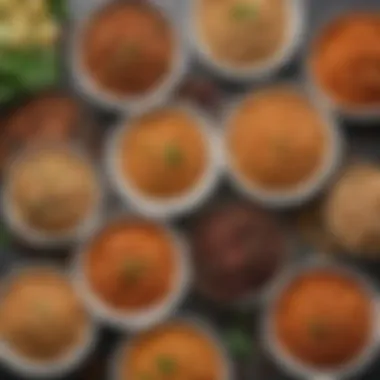

There are two main soaking methods:
- Overnight Soak: This is the most common method. Place the chickpeas in a bowl and cover them with water. Let them soak for at least eight hours or overnight. This method allows the chickpeas to absorb water and expand, making them easier to cook.
- Quick Soak: In this method, bring a pot of water to a boil, add the chickpeas, and boil for 5 minutes. After boiling, remove the pot from heat and let the chickpeas sit in the hot water for about one hour. This method is convenient when time is limited but still offers the benefits of soaking.
It is important to discard the soaking water as it may contain indigestible sugars that can cause discomfort. With soaked chickpeas, cooks can proceed to various cooking techniques that enhance the flavor and maintain the nutritional value of this ingredient.
Cooking Techniques
Different cooking techniques can yield distinct results in texture and taste, providing flexibility in recipes.
Boiling
Boiling chickpeas is a straightforward method and widely used for making soups or salads. The key aspect of boiling is that it allows for precise control over cooking time, helping to achieve desired tenderness. It is often a first choice for cooks because it is easy and requires minimal equipment.
The main characteristic of boiling is
- Simplicity: It needs only water and heat, making it widely accessible.
The advantage of boiling includes versatility in seasoning and flavor infusion, making it suitable for various dishes. However, a disadvantage is that boiled chickpeas can become mushy if overcooked, losing their firm texture. Therefore, timing is crucial, and monitoring the chickpeas while they cook is necessary.
Pressure Cooking
Pressure cooking is a fast-paced method that significantly cuts down on cooking time. This technique uses steam pressure to cook chickpeas quickly while maintaining their nutrients and flavor.
The notable feature of pressure cooking is
- Efficiency: It can cook chickpeas in about 10 to 15 minutes, making it suitable for busy cooks or those who want quick meals.
The advantage of pressure cooking is the retention of flavor compared to boiling, where some flavors can be lost. However, it requires caution as exceeding the cooking time can lead to mushy results. It is vital to follow the manufacturer’s instructions for optimal results.
Slow Cooking
Slow cooking allows chickpeas to cook gently over an extended period. This method results in flavorful dishes, particularly stews and curries, where spices and herbs meld beautifully with the chickpeas.
The defining characteristic of slow cooking is
- Depth of Flavor: The longer cooking time enables flavors to develop significantly, creating rich and hearty meals.
One of the key advantages of slow cooking is hands-off preparation; it allows cooks to prepare other ingredients without constant monitoring. However, the disadvantage lies in the longer cooking time, making it less suitable for last-minute preparations. Cooks must plan ahead to incorporate this method into their meal schedule.
The various cooking techniques open up a plethora of culinary possibilities. Using the appropriate method, cooks can achieve different textures and flavors while maximizing the health benefits inherent in chickpeas. Incorporating chickpeas through these methods can elevate any dish, fitting a range of individual tastes.
Flavoring Chickpeas
Flavoring chickpeas is a vital aspect of cooking that significantly elevates the dishes in which they are included. Given their naturally mild taste, chickpeas can benefit from a variety of spices and herbs that not only enhance their flavor but also complement their unique texture. This section covers how effective seasoning can transform chickpeas into a compelling ingredient in any meal.
Spices and Herbs
Incorporating spices and herbs is crucial when preparing chickpeas. The right combination can provide depth and complexity to the flavor profiles of your dishes. Common spices used include cumin, coriander, paprika, and turmeric. Each of these brings distinct characteristics. For instance, cumin adds an earthy aroma, while paprika contributes a smoky essence. Additionally, fresh herbs like cilantro, parsley, or mint can lend a burst of freshness that balances the richness of chickpea-based dishes.
Consider mixing spices in a dry rub or creating a spice blend. Using this method, one might combine equal parts of cumin and coriander, and a pinch of cayenne for heat. This easily allows cooks to season chickpeas before roasting or frying, leading to enhanced taste.
Furthermore, do not overlook the importance of salt. It is an essential component for drawing out flavors in chickpeas. It is advisable to season gradually during cooking rather than waiting until the end, as it ensures a more even flavor distribution throughout the dish.
Marinating Techniques
Marinating chickpeas can amplify their taste significantly. This process involves soaking chickpeas in a mixture of various ingredients like oil, acids, and seasonings, allowing them to absorb flavors before cooking. A good marinade typically includes a combination of olive oil, lemon juice, garlic, and assorted spices.
When marinating, ensure the chickpeas are coated evenly. Allow them to sit for at least thirty minutes to an hour. However, for a deeper flavor, refrigerating them for several hours or overnight is recommended. This technique works well for dishes like chickpea salads or roasted chickpeas, allowing the flavors to meld beautifully.
Important note: Experimenting with different marinating agents such as yogurt or tahini can yield unique flavor profiles, catering to various cuisines.
Cooking Chickpeas in Various Dishes
Chickpeas are versatile and adapt to many culinary styles. Their inherent qualities make them suitable for a range of dishes. Recognizing the potential of chickpeas in various culinary applications is essential for maximizing their flavor and nutritional benefits. From soups to purees, each category offers unique opportunities to incorporate chickpeas into meals.
Soups and Stews
Chickpeas add richness and texture to soups and stews. They absorb flavors well, enhancing the overall taste of the dish. In a basic chickpea soup, the legumes create a creamy base without the addition of dairy. Combined with vegetables and spices, they can transform a simple broth into a hearty meal. Additionally, chickpeas are an excellent source of protein, which is beneficial, especially in vegetarian recipes.
Salads
Incorporating chickpeas into salads elevates both taste and nutrition. Their firm texture holds up well with other ingredients, making them ideal for cold dishes. You can add chickpeas to a Mediterranean salad with cucumbers, tomatoes, and a sprinkle of feta cheese. This combination not only adds protein but also balances the meal with various flavors. The versatility extends to dressings; chickpeas pair well with both vinaigrettes and creamy sauces.
Curries
Chickpeas are frequently featured in curries. Their ability to absorb complex spices makes them an integral part of Indian and Middle Eastern cuisines. In curry dishes, chickpeas act as a protein source while complementing other ingredients such as coconut milk or yogurt. For instance, a chickpea curry can be both flavorful and satisfying, with the legumes providing a robust texture. When slow-cooked, the flavors meld beautifully, resulting in a deeply comforting dish.
Snacks and Appetizers

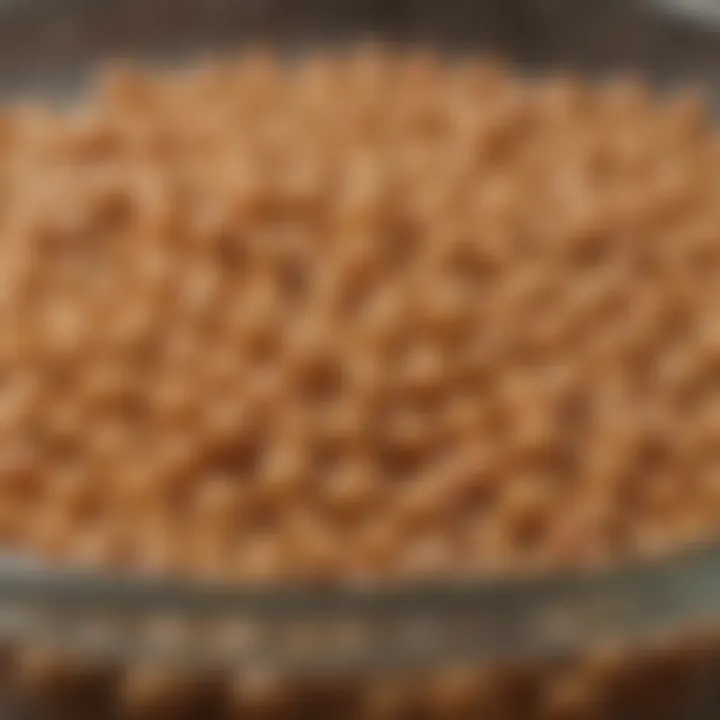
Chickpeas serve as excellent ingredients for snacks and appetizers. Roasted chickpeas have gained popularity as a healthy alternative to chips, offering crunch and flavor. You can season them with various spices to cater to different taste preferences. Additionally, they can be used to prepare chickpea fritters, which are perfect as party appetizers or as ingredients in a vegetarian platter.
Chickpea Purees
Chickpea purees are incredibly adaptable, with multiple applications in cooking.
Hummus Variations
Hummus is perhaps the most well-known chickpea puree. This spread has gained popularity for its versatility and health benefits. Traditional hummus consists of chickpeas, tahini, olive oil, lemon juice, and garlic. The key characteristic of hummus is its smooth texture and creamy consistency. Various variations, such as roasted red pepper hummus or garlic-infused hummus, present creative recipes for enthusiasts. These options offer varied flavors, while still being healthy and nutritious.
- Fun fact: Hummus is not only delicious but also a popular choice for many due to its protein content and low-calorie profile.
- Its unique feature lies in its ability to serve as a dip or spread, making it suitable for various occasions, from snacks to formal gatherings.
Spreads
Chickpea-based spreads provide an alternative to traditional spreads like butter or cream cheese. These formulations often blend chickpeas with olive oil and spices to create rich textures. The key characteristic of spreads made from chickpeas is their ability to provide a filling option for toasts or crackers. They are beneficial choices for health-conscious individuals seeking tasty replacements. While such spreads may differ in texture compared to classic options, they maintain high flavor intensity, which is a significant advantage in diverse meal preparations.
When cooking with chickpeas, remember that their adaptability makes them an excellent choice across various cuisines and dishes.
Storing and Preserving Chickpeas
Chickpeas are versatile legumes that can enhance various dishes. Properly storing and preserving them is important for maintaining their flavor, texture, and nutritional value. You can enjoy chickpeas in their best state by understanding how to store them short-term and long-term. This knowledge not only maximizes their shelf-life but also encourages you to make chickpeas a staple in your kitchen.
Short-term Storage
For short-term storage, both dried and canned chickpeas require specific conditions.
- Dried Chickpeas: Store them in a cool, dark place. An airtight container is ideal, as it keeps moisture and air out. A pantry or cupboard is suitable, ensuring it is not exposed to excessive heat or humidity. Under the right conditions, dried chickpeas can last for up to two years.
- Canned Chickpeas: Once opened, canned chickpeas should be transferred to an airtight container and refrigerated. They can be stored in the fridge for about three to five days. It is best to consume them within this time to ensure quality and taste remains intact.
Long-term Preservation Techniques
Long-term preservation techniques help ensure that chickpeas stay edible for extended periods. Two popular methods are freezing and canning.
Freezing
Freezing chickpeas is an effective way of preserving their freshness. The process involves blanching them before freezing, which helps maintain their texture and taste. Blanching means briefly boiling chickpeas and then rapidly cooling them in ice water. This process halts enzyme action, preserving flavor and color.
The main characteristic of freezing is that it’s easy and requires minimal equipment. In addition, frozen chickpeas can last for six to twelve months. This makes freezing a beneficial choice for anyone looking to store chickpeas long-term. However, it is worth noting that while freezing retains most nutrients, some slight loss may occur. Proper packaging in freezer bags or containers is essential to avoid freezer burn.
Canning
Canning chickpeas is another effective preservation strategy. This technique involves sealing chickpeas in jars or cans under high heat. The process kills bacteria and inactivates enzymes, thus extending shelf life. Canned chickpeas can last for several years in their unopened state. This is a popular choice for those who want ready-to-use chickpeas.
One unique feature of canning is that it provides convenience. Canned chickpeas are pre-cooked, making them quick to use in recipes. However, be mindful of the sodium content in canned chickpeas, as some brands may add preservatives or salt. Rinsing chickpeas can help reduce this sodium content before cooking.
Canned chickpeas offer convenience with a longer shelf life, while freezing maintains more of their natural texture and nutritional values.
By understanding these storage and preservation methods, you can make the most of chickpeas in your kitchen. Whether short-term or long-term, ensuring chickpeas are properly stored allows for flavorful meals any time.
Common Mistakes in Cooking Chickpeas
Cooking chickpeas might seem straightforward, but several common mistakes can undermine the dish's flavor and texture. Understanding these pitfalls can enhance your chickpea cooking experience. By avoiding these errors, you can ensure that the end result is both delicious and nutritious. This section discusses two critical mistakes: overcooking and underseasoning.
Overcooking
Overcooking chickpeas is a common error that can lead to undesirable results. When chickpeas are cooked for too long, their texture becomes overly soft and mushy. This can be especially problematic in dishes like salads, where some firmness is desirable. In soups or stews, while a softer texture might seem acceptable, overcooked chickpeas can break apart, resulting in an unappealing appearance and flavor.
To avoid overcooking, it is pivotal to check the cooking time closely. If you are using dried chickpeas, soaking them is crucial as it reduces the cooking time. Generally, chickpeas should be tested for doneness periodically. After about 30 minutes of simmering or once the pressure cooker indicates that they are ready, taste a few to see if they have reached the desired tenderness.
Properly cooked chickpeas should be tender without falling apart. Aim for a slightly firm but not crunchy texture that holds up in your recipes.
Underseasoning
Another frequent mistake is underseasoning chickpeas. With their mild flavor, chickpeas can absorb surrounding flavors. However, if they are not seasoned adequately during cooking, they might taste bland and uninviting. This mistake is especially evident in simple dishes like chickpea salads or hummus, where the chickpeas are the star ingredients.
To counteract this, it is essential to season the cooking water or brine for canned chickpeas properly. Adding salt early in the process can help the chickpeas absorb flavor. Additionally, consider incorporating herbs, spices, or even a splash of lemon juice to elevate the taste profile.
Tips for Proper Seasoning:
- Use quality sea salt in moderation.
- Experiment with spices like cumin, coriander, or paprika.
- Add fresh herbs like parsley or cilantro after cooking for a fresh flavor boost.
- Marinate in lemon juice or vinegar after cooking for extra zing.
By paying close attention to these two common cooking mistakes, you can significantly improve your chickpea dishes. This allows you to fully appreciate the texture and flavor that chickpeas can offer, enhancing your overall culinary creations.
Health Benefits of Chickpeas
Chickpeas are not just a culinary staple; they offer multiple health benefits that can enhance one's diet. In this section, we will explore the significance of these advantages. Understanding the role of chickpeas in nutrition can provide valuable insights for food lovers, cooks, and those looking to make informed dietary choices. By incorporating chickpeas into daily meals, one can gain essential nutrients that support overall health.
Protein Source

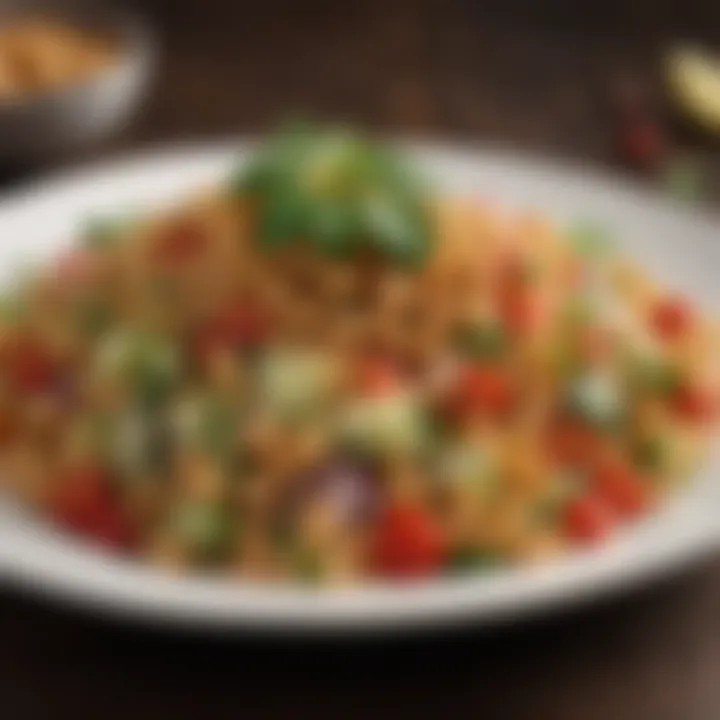
Chickpeas are an excellent plant-based protein source, making them an ideal option for vegetarians and vegans. They provide about 15 grams of protein per cooked cup. This is substantial compared to other legumes and grains. Consuming chickpeas regularly can help in muscle building and repair, particularly crucial for active individuals. Additionally, they are low in fat, making them a healthy protein alternative. Here are some key points about chickpeas as a protein source:
- Versatile ingredient: Can be used in salads, soups, and dips like hummus.
- Complete protein: When paired with grains, they form a complete protein.
- Satiety: Helps keep one feeling full longer, aiding in weight management.
Dietary Fiber
Chickpeas are rich in dietary fiber, providing approximately 12.5 grams per cooked cup. This high fiber content is beneficial for digestive health. Fiber supports regular bowel movements and can help prevent constipation. In addition, it aids in maintaining a healthy gut microbiome. The soluble fiber in chickpeas can also lower cholesterol levels and manage blood sugar spikes. Key benefits of dietary fiber include:
- Heart health: Reduces the risk of cardiovascular diseases.
- Weight management: Enhances feelings of fullness, which can decrease overall calorie intake.
- Blood sugar control: Slows digestion and absorption, leading to more stable blood sugar levels.
Nutrient Density
Chickpeas are nutrient-dense, meaning they provide significant nutrients with relatively few calories. They are packed with vitamins and minerals, including iron, magnesium, and folate. Iron is vital for oxygen transport in the body, while magnesium contributes to muscle and nerve function. Folate is particularly important for pregnant women, aiding in fetal development. The high nutrient density of chickpeas offers several advantages:
- Supports immune function: Vitamins and minerals aid in various bodily functions and bolster the immune system.
- Energy production: Essential nutrients support metabolic processes that grant energy.
- Cost-effective: A nutrient-rich food that is inexpensive compared to other protein sources.
"Incorporating chickpeas into your diet not only adds flavor but also contributes significantly to your nutritional intake."
With these benefits in mind, it becomes clear that chickpeas are not just a culinary choice; they enhance well-being and promote a balanced diet. Understanding these elements can lead to better meal planning and greater appreciation for this versatile legume.
Culinary Innovations with Chickpeas
Culinary innovations with chickpeas have emerged as a significant element in modern cooking. The versatility of chickpeas allows cooks to explore creative uses that extend beyond traditional recipes. This part of the article highlights the potential of chickpeas in new forms and applications. It also points out that innovations can contribute to overall health benefits, plant-based diets, and sustainability.
Chickpea Flour
Uses in Baking
Chickpea flour, also known as gram flour or besan, has gained popularity in baking for its unique nutritional properties. It is a rich source of protein, fiber, and various vitamins. This makes it a valuable addition to recipes, catering to those seeking healthier alternatives to wheat flour. When used in baking, chickpea flour imparts a slightly nutty flavor and a dense texture. It forms a suitable base for gluten-free baked goods.
The incorporation of chickpea flour in baking offers several benefits.
- Nutritional Value: High in protein and fiber, it caters to a health-conscious audience.
- Texture Enhancement: The density can provide a different mouthfeel, which can be desirable in certain baked items.
However, this flour can also present challenges. It absorbs moisture more than wheat flour, which may require adjustments in liquid ingredients when formulating recipes.
Thickening Agent
Chickpea flour serves effectively as a thickening agent in various culinary applications. It can be used in sauces, soups, and stews to modify consistency without altering the flavor significantly. The ability of chickpea flour to thicken comes from its starch content, which acts similarly to cornstarch or all-purpose flour.
This characteristic makes it a beneficial choice for enhancing texture in dishes while keeping them plant-based. It can add nutritional value without much effort. Here are some reasons for its favor:
- Healthier Alternative: Using chickpea flour instead of conventional thickeners can improve the nutritional profile of the dish.
- Flavor Neutrality: It allows the main ingredients to shine through without overpowering tastes.
Nevertheless, the unique property of chickpea flour may carry some disadvantages. For instance, it can clump if not mixed correctly, which could affect the final dish's appearance and mouthfeel.
Gastronomic Trends
The current gastronomic trends reveal an increasing interest in plant-based ingredients. Chickpeas, including their transformations into flour, align perfectly with these movements. Their incorporation in various culinary contexts showcases an innovative approach to using this humble legume.
Sustainability and Chickpeas
The sustainability of food sources increasingly matters in modern culinary practices. Chickpeas, being a staple in many diets, present significant possibilities for mindful consumption. Their cultivation offers ecological and economic benefits, making them relevant to discussions around sustainable agriculture. Embracing chickpeas not only promotes health through their nutritional value but also supports environmental conservation and economic stability.
Environmental Impact
Chickpeas are particularly beneficial for soil health. They are legumes, which means they can fix nitrogen in the soil. This process enriches the soil, reducing the need for chemical fertilizers. By enhancing soil nutrients naturally, chickpeas contribute to a more balanced ecosystem. Such methods help in maintaining biodiversity and prevent soil degradation.
Moreover, the water requirements for growing chickpeas are relatively low compared to other crops like rice and wheat. This characteristic makes them a more sustainable option in areas facing water scarcity. Additionally, chickpeas can grow in poor soils, making them suitable for regions with challenging agricultural conditions. This adaptability not only ensures food security but also promotes sustainable land use.
Economic Benefits for Farmers
Chickpeas can provide farmers with greater economic security. Their resilience allows for successful cultivation even in less than ideal environments. This can lead to higher yields and better financial returns when the market values fluctuate.
Furthermore, growing chickpeas can diversify a farmer's crop rotation. This diversity reduces the risk of crop failure due to pests or diseases that may affect a single type of crop. When markets embrace health-oriented food trends, chickpeas often see increased demand, further boosting farmers' incomes.
"Diversifying crops can lead to more stable income streams for farmers. Chickpeas serve as an excellent choice, offering both nutritional benefits for consumers and financial rewards for producers."
In summary, by choosing chickpeas, consumers support sustainable agricultural practices while contributing to farmers' livelihoods. This holistic connection underscores the importance of chickpeas in creating a healthier planet and stronger economies.
Epilogue
In this article, we have explored the multifaceted dimensions of cooking chickpeas, detailing their health benefits, versatile usage, and practical cooking methods. The significance of understanding chickpeas goes beyond mere culinary preference; it encompasses nutritional intake and sustainability. Chickpeas are a powerhouse of protein, fiber, and essential nutrients, contributing significantly to a balanced diet. The preparation methods we discussed enable flexibility in the kitchen, whether one chooses to boil, pressure cook, or slow cook.
Recap of Key Points
- Health advantages: Chickpeas provide essential proteins and great dietary fiber, aiding in digestion and contributing to heart health.
- Preparation methods: Options such as soaking and various cooking techniques ensure that different culinary preferences can be satisfied, accommodating both convenience and complexity.
- Culinary versatility: From soups to curries, and even as purees such as hummus, chickpeas can transform a dish in flavor and texture.
- Storage tips: Properly storing chickpeas extends their shelf life, making them a reliable staple in any pantry.
"Incorporating chickpeas into your meals opens the door to innovative cooking possibilities."
Encouragement to Experiment
Exploring chickpeas in the kitchen can spark creativity. They are adaptable, allowing for experimentation with flavors and textures. Do not hesitate to try adding different spices or combining them with varying vegetables. Consider trying chickpea flour in baking or creating your own spreads with pureed chickpeas. The culinary world is vast, and chickpeas hold a unique place in it.
In summary, chickpeas offer various advantages as a food choice, from nutrition to culinary flexibility. Embracing them as a central ingredient can elevate your cooking experience while contributing to healthier eating habits. So, consider incorporating chickpeas more frequently in your daily meals.







